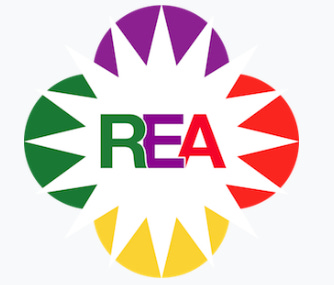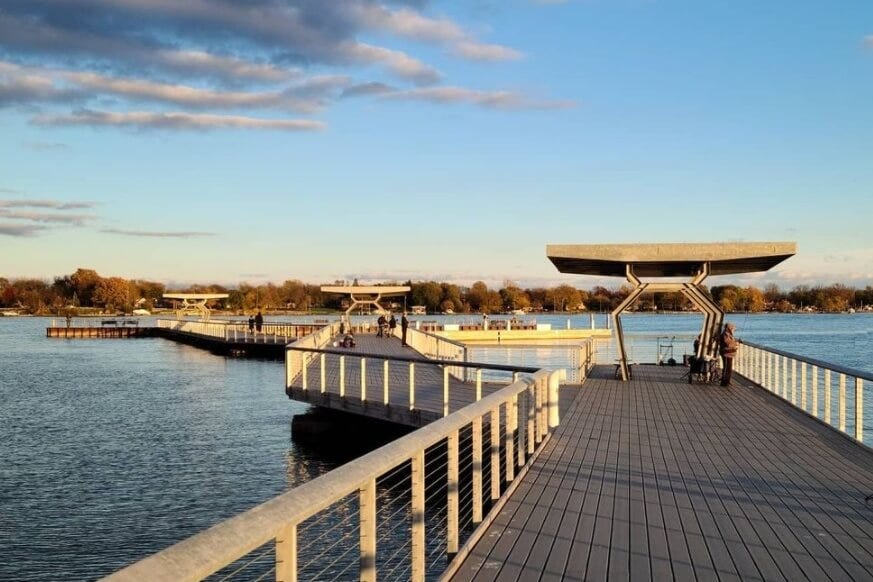Refugia Newsletter #71
Fall of the Chevron doctrine, fun with clickable maps, Climate Corps from the inside, and a girl who is just done with it.
Refugia News
June gloom. That’s what I’ve been feeling these past two weeks, in response to a lot of rough national news and some ugly developments in my church denomination—which I will not go into here. I’ll spare you that.
Thankfully, I have something to look forward to next week: I’m speaking on Monday at the Religious Education Association’s Annual Meeting (online). Their theme is “Dear Earth: innovating religious education through the lens of climate justice.” They have gathered a whole bunch of wonderful speakers for the conference, many of whom I know and a bunch I’m eager to “meet”! Here’s what the REA says about the meeting theme:
The world is on fire: we know it in our bones and feel it in our hearts. Science, sociology and other disciplines describe dire scenarios as oceans rise, cities warm, and species decline. We know humanity’s most vulnerable populations will suffer most severely. These challenging times demand our attention as religious educators, in and out of institutions, to mitigate harm when possible, create new rituals of grief and lament when needed, and stir human creativity on behalf of all beings.
The event is free to members of the REA.
The Religious Education Association is “the world’s oldest and largest association of scholars and researchers in the field of religious education.”
Oh, and I should share a quick update on that new native garden area I mentioned last week. I learned something: do NOT use the cardboard method on pachysandra without actually killing the stuff first. Pachysandra is eternal. It’s sprouting up between my new native plants and I will have to keep after it, probably till the end of time.
This Week in Climate News
The end of the Chevron doctrine—you’ve seen the headlines, but here’s what’s going on. In 1984, Chevron U.S.A. v. Natural Resources Defense Council established the “Chevron doctrine” or “Chevron deference.” The idea was that when Congress passed a law that had some ambiguity—like, “Dear EPA, please keep our air clean”—Congress let an agency of experts (e.g., the EPA) figure out the details. However, those details often get challenged in court by corporations or other entities that don’t like the rules. Chevron basically said: Look, judges shouldn’t pretend to be experts on the technical detail. We should generally defer to the agency experts for the exact details for setting rules that fulfill legislation.
An article in the New York Times notes that the Chevron doctrine has often kept protective rules in place against the challenges of those who do not like them:
Since then, thousands of legal decisions have relied on the Chevron doctrine when challenges have been made to regulations stemming from laws like the 1938 Fair Labor Standards Act, the 1970 Clean Air Act, the 2010 Affordable Care Act and others.
Loper Bright Enterprises v. Raimondo, the decision handed down by the US Supreme Court this week, overturned that ruling by the predictable 6-3 margin. The idea now is that when a rule is challenged (and they’re always challenged) the court decides—unless Congress can pass a more specific piece of legislation precisely defining the rule. In fact, Justice Roberts, who wrote the majority opinion, made very clear his disdain for the expertise of those who work for agencies: “Chevron’s presumption is misguided because agencies have no special competence in resolving statutory ambiguities,” Roberts wrote. “Courts do.”
Conservatives consider this a huge victory for “reining in the administrative state,” but what it really means is that specific matters of public safety, including EPA regulations, FDA safety measures, labor laws, health care standards, even tax law, are now dependent on Congress passing very specific legislation, or they are subject to the discernment of judges who are non-experts.
Quoted in the New York Times article:
“If Americans are worried about their drinking water, their health, their retirement account, discrimination on the job, if they fly on a plane, drive a car, if they go outside and breathe the air — all of these day-to-day activities are run through a massive universe of federal agency regulations,” said Lisa Heinzerling, an expert in administrative law at Georgetown University. “And this decision now means that more of those regulations could be struck down by the courts.”
Interestingly, the striking down of the Chevron doctrine can also work to the disadvantage of those who want looser regulations (in fact, that was the case with the original Chevron ruling), because how challenges are resolved now depends on … whichever judge you happen to get. Of course, court challenges can wind their way by appeal all the way to the Supreme Court. All of this takes time and keeps many, many lawyers busy.
Thanks to Schratz P. Connor of the University of Maine School of Law for this image.
A great article by Jeff Turrentine for the National Resources Defense Council gives helpful background on the history of the Chevron doctrine. And this article by Zoe Schlanger in The Atlantic explains that this ruling is mostly likely to affect older rules based on older laws. That’s because people saw this coming. So more recently, Congress has been passing very specific laws. The Inflation Reduction Act, for instance, goes into great detail precisely in order to protect against the fall of Chevron. The bigger danger is to current rules that are based on interpretations of older laws, such as the Clean Air Act from the 1970s.
Bottom line: the outlook for addressing climate change has just become more grave. An article in Inside Climate News by Marianne Lavelle outlines the many court cases already in the pipeline that challenge President Biden’s policies and rules aimed at reducing greenhouse gas emissions:
These lawsuits, most of them in the names of Republican-led states that have been joined by fossil fuel industries, essentially accuse the agencies of overstepping their legal authority with regulations to curb greenhouse gas emissions or otherwise address climate change.
Everything will be challenged. And the backstop that Chevron provided is now gone. Equally grave is the potential to degrade the quality of the science used in government agencies and the ability to recruit new scientists to government posts. For more on that, read this excellent piece by a 40-year veteran of the EPA.
What can we do? Elect climate champions this fall who will write and pass very specific laws to curb greenhouse gas emissions, promote renewable energy, and protect the health of our environment. This includes all offices, down to the most local, including all judges!
Deeper Dive
Today’s Deeper Dive could be called “cool interactive websites for you to play with.”
Let’s start with the US Fish and Wildlife Service’s inventory of Urban National Wildlife Refuges. Thanks to reader Joy Remer for pointing this site out to me. Here’s what the site says about these special places:
Urban national wildlife refuges work with community partners to expand outdoor recreation and education for Americans living in and around cities. They strive to dismantle historic barriers to access and make all visitors feel welcome. The 101 urban refuges managed by the U.S. Fish and Wildlife Service are all located within 25 miles of population centers of 250,000 people or more.
See if there’s one near you! Note that these are federal sites; of course there are many, many more local and state refuges and preserves.
The Detroit River International Wildlife Refuga. Image credit: Instagram/littleguidedetroit.com
Next up: what might your town/city look like in 2080? This is one of those scary maps where you can see how much hotter your place could be. You can play around with the toggle switch for a bad emissions scenario and a not-quite-so-bad emissions scenario. (The site does explain their data sources and methods.)
This is what my town will be like under the worse scenarios. The map will compare your future conditions to a current place.
How about some opinion maps? Thanks to the good people at Yale Climate Communications for putting together this interactive map. You can get down to the county level to see what people around you think about dozens of climate-related questions. Good news: 72% of US adults think climate change is happening, and 79% support funding renewable energy research. However, only 32% hear about global warming in the media every week. Yikes.
Image credit: Yale Climate Communications
Refugia Sighting: Three-Question Interview
We could use some good news at this point, yes? Let’s talk about jobs. The Inflation Reduction Act is already creating hundreds of thousands of them by spurring private investment in the cleantech industry. (Yes, cleantech is now one word, I guess. Not sure I approve, but there you go.) Here’s what Jennifer Bendery of the HuffPost wrote on June 24:
Climate Power, a left-leaning organization focused on combating climate change, has been meticulously tracking public announcements of clean energy jobs from the private sector since the law’s passage. As of May 31, [2024,] it found that U.S. companies have announced or moved forward with projects accounting for more than 312,900 new clean energy jobs for electricians, mechanics, construction workers, technicians, support staff and others.
This job boom is expected to continue:
Other researchers have projected the law will create more than 5 million clean energy jobs over the next decade. Both Climate Power and E2, a group of business leaders who advocate for environmental polices, have noted that Republican-led congressional districts benefited the most from the bipartisan law in its first year.
Another small, cool way the IRA is creating jobs is through the Climate Corps, which is modeled on the old Civilian Conservation Corps. The national Climate Corps is now open for business! Kate Yoder, in an article for Grist from June 18, wrote:
Within weeks, the nation will deploy 9,000 people to begin restoring landscapes, erecting solar panels, and taking other steps to help guide the country toward a cleaner, greener future.
The plan is to help young people train and prepare for green careers, including in the trades:
In April, the White House announced a partnership with TradesFutures, a nonprofit construction company, a sign that the program might help fill the country’s shortage of skilled workers who can help electrify everything. The White House will also place members in so-called “energy communities” like former coal-mining towns to help with environmental remediation and other projects.
What is it like to be in the Climate Corps? Well, maybe this is a stretch, but it seems that these folks are engaged in refugia work—by creating pockets of renewal, healing damaged places, and building new capacities.
To illustrate, I am pleased to introduce you to Jacob Bol, who just started this year in Michigan’s version of the federal program: the MI Healthy Climate Corps. This outfit is an initiative of Gov. Whitmer of Michigan’s Healthy Climate Plan, and partners with AmeriCorps as well as numerous state agencies. MI Healthy Climate Corps just launched their first cohort of 30 young people for an eight-month stint.
Michigan is not the only state to get a jump on the climate corps concept. Arizona, California, Colorado, Illinois, Maine, Maryland, Michigan, Minnesota, New Mexico, North Carolina, Utah, and Washington also have programs.
Jacob is a 2020 graduate of Calvin University, where he majored in Social Work. This week, I asked Jacob to tell us about his experience. You’ll recognize the outfit he’s working for if you are a regular reader of this newsletter: the Plaster Creek Stewards project. That’s the how the Climate Corps works: entities already doing climate work can apply to have a Climate Corps inductee come work for them. That’s what happened for Jacob. So consider this the next installation in my occasional series, the Three-Question Interview.
Jacob Bol, member of MI Healthy Climate Corps’s first cohort. Image credit
DR: How did you get involved in the Michigan climate corps? What drew you to the program?
Jacob: I got involved with the climate corps through my connections with Plaster Creek Stewards. I live in the Plaster Creek watershed and I had gotten to know some of the staff members through church or volunteering. So there was some familiarity between us when PCS got the [state] grant for the Climate Corps position. They reached out to me and asked that I apply, so I did!
Leading up to that, I had been doing social work since graduating in 2020. As a hobby and as self-care, I had been starting gardens at my home. I started out with a small vegetable garden, which then sparked an interest in pollinators, then native plants, then local ecosystems and conservation. It felt like something in me reignited, and I decided to pursue that passion as much as I could.
So while it was a specific interest in working with PCS that led me to the Climate Corps, I was also really excited about the program and the opportunity to connect with people across the state who were also passionate about climate issues.
Since starting, I’ve made a lot of friends and connections with the other cohort members. Many of them work in vastly different jobs than I do, including clean energy, policy making, transportation, or conservation of public lands. So it’s a very diverse range of interests and experience, which I think in turn creates a stronger web of leaders and organizations who can collaborate on regional or state-wide goals. There’s a lot I’ve learned from these peers and lot more learning to go!
A Plaster Creek Stewards volunteer day, where area folks gather to plant a lot of native plants to filter and slow the creek as it passes through a public park. You can’t see me in this photo, but I was there that day!
DR: What do you do day to day?
Jacob. My day to day involves working at a native plant greenhouse, installing rain gardens, and working on larger restoration projects that increase the health of Plaster Creek. For some background, Plaster Creek is the most polluted waterway in West Michigan, which feeds directly into the Grand River, which of course goes right into Lake Michigan. I like to explain it in this way to people who are unfamiliar with the creek to help contextualize it, but also to help people build that personal connection. Most people in West Michigan have been to the beach, and it’s a huge part of our sense of place. If we can show people that something we all love is getting polluted upstream, maybe that will drive them to action and love the water closer to our neighborhoods.
Anyway, all of this would be for nothing if we didn’t also involve people, so I also love working with property owners or community residents to build knowledge of plants, the creek, and how we can make our watershed a better and healthier place. I’d like to think that, in some way, I’m still practicing social work.
For the Climate Corps side of things, we have weekly check-ins and seminars that are designed to help each of us grow professionally and build towards a career in climate work. We also have had some conferences and service projects that we do together. Of all the things I love about the program, I’ve gotten the most out of these personal connections I’ve been able to build with the other members. Each one is so invested in the work they do, which has given me a lot of inspiration.
DR: How do you see this helping or inspiring you in your future work and citizenship?
Jacob: My experience with the Climate Corps has shown me that people need to be a part of the solution. Like I said earlier, the work we do would be nothing if it did not involve the community. We can make policies, we can plant native plants, we can make electric school buses, but if we’re not engaging the community on what matters to them, or if we’re not working to get them involved, it won’t last.
My experience in the Climate Corps inspires me to continue the work that I’m doing in a way that brings as many people as possible into it. I feel like I’m doing a lot of this already, but there can always be more and we can always do it better. I’m excited to get new ideas from the other members of the Corps, and excited to give back to them in the same way.
The Not-So-Wayback Machine
To close today, I commend to you this excellent article by Lawrence MacDonald, author of Am I Too Old To Save the Planet? A Boomer’s Guide to Climate Action. MacDonald, writing from the Jewish tradition, makes a compelling case for religious people getting involved in climate advocacy. MacDonald writes:
In the chapter [of his book] “What’s Faith Got to Do With It?”, I note that all religious traditions require that we protect the planet and care for the poor. Top faith leaders are urging action. Faith-based advocacy can be a source of power: when religious groups demand action, politicians listen. This is especially the case when people from differing faith backgrounds join together.
That’s the key: interfaith coalitions. MacDonald’s article appeared in the latest issue of the Third Act Faith Going Deep Substack. Please share with people of faith you know who wonder whether they should get involved.
Speaking of Third Act Faith, please enjoy this image from a series of clever and inspiring postcards sent to all contributors to TAF, thanks to a generous donor. This is “Our Lady of Not Taking it Anymore” by Rogene Mañas, rogenemanas.com. Highly recommend visiting Rogene’s site. Her work is wonderful! Our Lady here is part of Mañas’s Everyday Saints collection. Doesn’t she just capture the mood?
That’s all for this time. Until next time, be well.
As usual, all bold type in quotations is added unless otherwise indicated.











